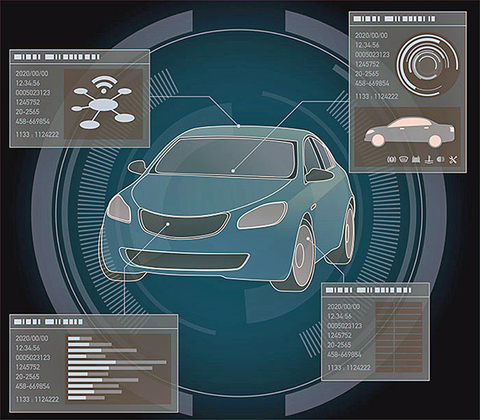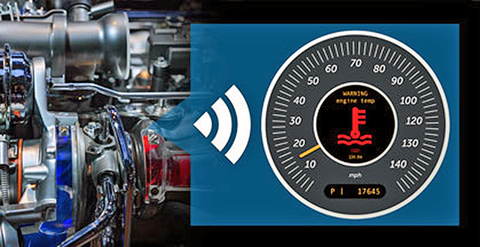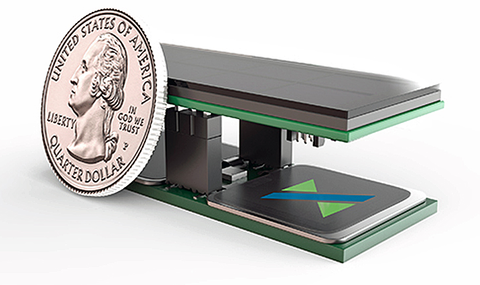
Autonomous vehicles are presently dominating the headlines with the likes of Google, Uber, and Tesla pushing to produce the first fully autonomous car. It’s predicted that autonomous cars will be on our roads by 2022 with trials already being done around the World.

However autonomous vehicles are not just about being driverless, they can also provide key data authorities can use to ensure a city runs smoothly and efficiently. Autonomous cars and smart cities are intrinsically linked and will only truly achieve their full potential when they seamlessly interact. As cities need to use this real-time data to become truly smart, it creates its own challenges for sensor technologies and the interface between the autonomous vehicle and the smart world.
There are four main types of data that can be collected by a smart city from an autonomous car:
- Non-sensitive data – this will be data like congestion data, parking availability
- Personal - location and biometrics details that can be used to access the car and its services
- Special category data – data collected during a collision calling of the emergency services by the car providing information about the passengers and if they have any specific needs
- Commercial sensitive data – data specific to the manufacturer (linked to securing their IP) which will enable them to review how the autonomous car is functioning and flag any issues
Sharing this data is going to be key to the overall impact of autonomous cars on the wider smart city. If all the data is held with the car manufacturers, the wider impact of the data will be limited. The wider sharing of the data; the wider the benefits. Sharing of anonymous data with local governments can enable them to understand traffic flow, condition of the roads; sharing with infrastructure organisations enables improved road planning, parking needs, 5G rollout needs and hotspots and electric vehicle charging sites.
Both autonomous cars and smart cities require a large and varied mesh of sensor nodes to provide the correct information, to the correct place at the correct time. Whilst some sensor nodes will be able to seamlessly interact with existing technologies, others are required to function with minimal maintenance and can be self-sufficient for power.
The approach to including sensor technology in both cars and cities requires a different tactic.
The number of sensors present in a car is going to increase from approx. 100 in a car today to several hundred in a fully autonomous vehicle. Wiring is already the third heaviest component in a car behind the engine and the chassis – increasing the number of sensors will compound this issue further. So different approaches need to be explored to minimize the weight of wiring and maintain the negative trend for CO2 emission from vehicles in line with Government policies whilst still providing the benefits the wider sensor range provides.

Smart cities are also facing similar challenges due to the increased sensing technology being used. Because the smart city is already powered, people assume that powering the sensor technologies is not an issue. Cities have continuous pressure to reduce their energy consumption for both cost and environmental aspects. Since sensor technologies need to be made available when and where they need to monitor which can often be in difficult to reach locations – sides of buildings, underground, embedded inside the construction of buildings - the support and maintenance of these sensors can in some instances be impossible. Battery usage helps these sensors to be located away from wired power sources but they create the maintenance requirement of battery replacement
Improved battery technology is now able to provide small batteries that when partnered with an energy harvester can be standalone to address the needs of both smart cities and autonomous cars. Advancements in solid state battery technology can help overcome many of these challenges. Solid state batteries differ from current Lithium-ion or Lithium polymer batteries in the way they have both solid electrodes and solid electrolytes, instead of the liquid or polymer electrolytes.
Recent advancements in solid state batteries mean they now offer more stable, energy-efficient and reliable battery technology that ever before. Solid state batteries paired with energy harvesters, that can harvest energy from vibration, both inside and outside light, heat to name a few. Energy harvesting enables self-sustaining power sources that do not need to be changed regularly or use additional, heavy cabling.
Different sensor types have different power requirements and some are expecting to require battery backup as standard to ensure on-going functionality when mains power is not available.
Relative to standard lithium ion batteries, the Stereax P180 solid state batteries have lower leakage currents and a life span of up to 10 years. Their small footprint means they reduce both the size and weight of any sensor unit and their longevity allows them to be fitted into sealed units and left. Also, different to standard liquid lithium ion batteries, the P180 can tolerate high moisture conditions and support temperatures range from -40°C to +150°C

Whilst testing has started for autonomous cars and smart city solutions already being implemented it’s important not to rush along but to stand back ensure there is longevity in the solution. Individually both autonomous vehicles and smart cities offer great benefits but together they offer so much more. However, their real success will be seamlessly interacting over the long term. For this to happen, powering all the sensors required in a fit and forget manner will be key.
About the author
Denis Pasero joined Ilika Technologies in 2008, as a scientist specializing in battery technology, to manage commercial lithium ion projects. He became part of the Ilika team to apply his strong academic knowledge to commercial applications and saw the potential to be part of the development and success story of an enterprising smaller company with exciting technology and novel product ideas. Today, as Product Commercialization Manager, Denis interfaces between customers and technical teams. For further information email [email protected] or phone: 0044 + 2380 111 400.